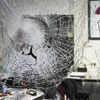
Who Monitors Your VMS?
Plan ensures that failure is not an option
- By Linda Richardson
- Nov 01, 2012
It’s 2 a.m. There’s a disturbance at your high
school campus. Windows are broken, computers
are stolen, and by the time the authorities
arrive there’s no sign of the intruders. That’s
OK. You’ll have video of the criminals. In fact,
the footage will be crystal clear and irrefutable
because you invested thousands of dollars
in a high-tech IP video surveillance system.
Your system has been configured for weeks of
storage and with cameras placed at every
angle near the incident. You know you have
great images.
However, when you go to retrieve the video, you discover there is
none. The server linking all of the cameras in that section of the building
shut down for a system update and never restarted. It’s not the
VMS’s fault—it was working properly. It’s not the cameras’ fault—they
worked, as well. To avoid this costly and frustrating scenario, users
should invest in the ultimate technical support with a Customer Assurance
Plan (CAP) like the one pioneered by Video Insight.
“Implementing a video surveillance system is an integral step in
your overall security program,” said Tom Nell, Video Insight director
of technical services. “But if you don’t proactively monitor the performance
of your system, then you can’t be sure that it is operating at
full capacity.”
Video Insight developed CAP to proactively monitor the status of
your VMS—servers, cameras and connections—ensuring you know
when something isn’t working properly and preventing the scenario
described above. Of course, a product like Video Insight comes with
technical support for issues that arise and that are linked to the performance
of the software. But, as an added feature, CAP provides a dedicated
specialist who monitors the operation of your system to ensure it
is always working properly, and, if not, to diagnose the problem—
determining, for example, when the system went down and if was
caused by a switch, power failure or something else.
“A program like CAP is essential because, number one, it maintains
the integrity of your system, but it also provides a level of support not
available to many overtaxed or understaffed IT departments, particularly
in industries such as school districts and colleges that continue to
face serious budget issues,” Nell said.
How CAP Works
The key factor behind the success of CAP is having a dedicated technology
specialist personally review a customer’s system status daily.
This is done in conjunction with three important elements in the
Video Insight software:
Health monitor. The health monitor runs as a service in the
background and monitors the receipt of messages from other servers
to ensure server uptime and reporting of any issues affecting the
servers or cameras. The health monitor can be configured to send
email alerts to the appropriate individual if messages from the servers
are not received within a predetermined time frame. Servers also
send messages to the health monitor on camera operation and disk
storage usage.
Monitor station. The monitor station is the primary user interface
in the product suite. From an end user perspective, it provides centralized viewing of live and recorded
images from any server. System and security
administrators use the monitor station to
setup and configure all servers and cameras
from a central location.
With CAP, the monitor station also shows
the status of servers that are active. Inactive
servers are indicated by a red dot. Users also
can view and access the health monitor, indicated
by a red cross.
Server statistics. The dedicated CAP specialist
also can evaluate system status by viewing
server statistics. These provide vital information
regarding the server status, camera
status, storage, licensing and a list of current
online users. For example, server statistics
can tell you when data from the camera was
last written, giving a true picture of how the
cameras are working and what data has been
saved. An important element of server statistics
is accessibility from any machine that has
the VI monitor station installed.
CAP-plus. A proactive monitoring program
such as CAP is a welcome service for
those who, due to budget constraints or thinly
spread IT professionals, don’t have the
capability to ensure that the full functionality
of their video management system is being
properly monitored and delivered. But what
happens when there is an issue that can’t be
fixed remotely by a CAP specialist?
In addition to CAP, Video Insight offers
CAP-Plus, a service providing a technician—
oftentimes consisting of a trusted
partner systems integrator in the vicinity of
the enduser—to make the necessary repair.
Of course, prior to a technician deployment,
the CAP specialist will make every effort to
quickly resolve issues remotely. If the issue is
caused by failed hardware, the technician
will replace the hardware with a functioning
unit, provided the hardware was purchased
from Video Insight and is under warranty
during the time of the service call.
This article originally appeared in the November 2012 issue of Security Today.